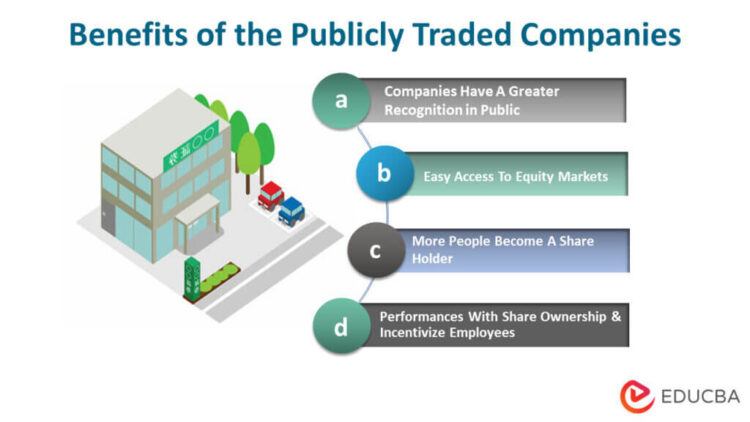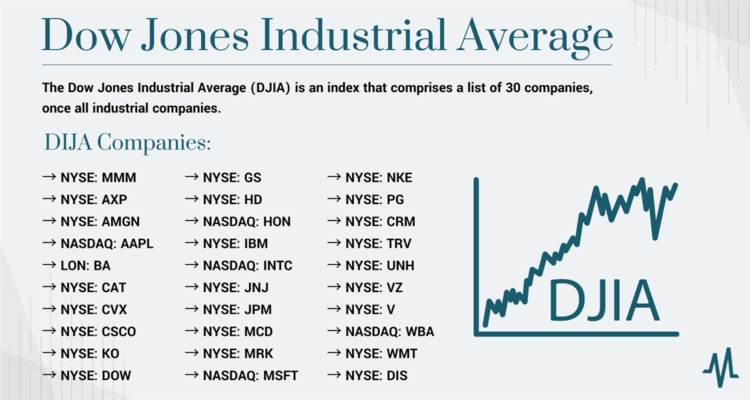
How to purchase stock? It might sound intimidating, but it’s actually a pretty straightforward process. Think of it like buying anything else online, except you’re investing in a piece of a company. You’re essentially becoming a part-owner and sharing in the company’s successes (or losses).
From understanding the basics of stocks to choosing the right brokerage and placing your first order, this guide will walk you through the entire process. Whether you’re a complete newbie or just need a refresher, this is your one-stop shop for getting started with stock investing.
Opening a Brokerage Account

A brokerage account is a crucial step in your journey to investing in stocks. It acts as your gateway to the stock market, allowing you to buy, sell, and manage your investments. Opening a brokerage account is a straightforward process that involves a few key steps.
Account Application
To open a brokerage account, you’ll need to fill out an application form. This form typically asks for personal information, such as your name, address, Social Security number, and date of birth. You’ll also be required to provide financial information, such as your income and assets.
- Many brokerage firms offer online applications that can be completed in minutes.
- Some firms may require you to visit a branch office in person to open an account.
- You’ll need to choose an account type, such as a cash account or a margin account.
Funding Your Account
Once your application is approved, you’ll need to fund your account. This means depositing money into your brokerage account so that you can start buying stocks. You can fund your account in several ways:
- Bank transfer: This is the most common way to fund a brokerage account. You can transfer money from your bank account directly to your brokerage account.
- Check: You can deposit a check into your brokerage account. This may take a few days to process.
- Wire transfer: A wire transfer is a fast way to deposit money into your brokerage account, but it may incur fees.
Verification
After you’ve funded your account, your brokerage firm will verify your identity and address. This is a standard security measure to protect your account and prevent fraud. The verification process may involve:
- Providing a copy of your driver’s license or passport.
- Confirming your address by mail or phone.
- Answering security questions.
Linking a Bank Account
Linking your bank account to your brokerage account is essential for making deposits and withdrawals. Most brokerage firms allow you to link your bank account online through their website or mobile app.
- You’ll need to provide your bank account information, such as your account number and routing number.
- The brokerage firm will then verify your bank account information.
- Once your bank account is linked, you can transfer money between your bank account and your brokerage account easily.
Securing Your Account
Protecting your financial information is crucial. You should take steps to secure your brokerage account and prevent unauthorized access:
- Choose a strong password and don’t use the same password for multiple accounts.
- Enable two-factor authentication, which requires you to enter a code sent to your phone or email in addition to your password.
- Be wary of phishing emails and websites that try to trick you into giving up your personal information.
- Monitor your account activity regularly for any suspicious transactions.
Researching Stocks
Before you dive into buying stocks, you need to do your research. This is crucial for making informed decisions and avoiding costly mistakes. You want to understand the company behind the stock and its potential for growth. There are two main approaches to researching stocks: fundamental analysis and technical analysis.
Fundamental Analysis
Fundamental analysis involves examining a company’s financial health, management, and industry trends. This helps you determine if the company is a good investment.
Here are some key areas to consider:
- Financial Statements: Review the company’s income statement, balance sheet, and cash flow statement. Look for trends in revenue, profitability, and debt levels.
- Management Quality: Research the company’s leadership team and their track record. Look for strong leadership with a proven ability to grow the business.
- Industry Trends: Analyze the industry the company operates in. Are there growth opportunities or challenges that could impact the company’s future?
For example, you might analyze a company’s financial statements to see if it’s generating consistent profits and growing its revenue. You could also research the company’s management team to see if they have a strong track record of success. Finally, you might research the company’s industry to see if it’s facing any significant challenges or opportunities.
Technical Analysis
Technical analysis uses charts and patterns to identify potential trading opportunities. This approach focuses on the price and volume history of a stock to predict future price movements.
- Chart Patterns: Technical analysts look for patterns in price charts, such as head and shoulders, double tops, and triangles, to identify potential buy or sell signals.
- Technical Indicators: Technical analysts use various indicators, such as moving averages, MACD, and RSI, to identify trends and momentum.
For example, a technical analyst might look for a “breakout” pattern in a stock’s price chart, which suggests a potential price surge. They might also use a moving average indicator to identify a trend in the stock’s price.
Reliable Resources for Stock Research
There are many resources available to help you research stocks. Here are some examples:
- Financial News Websites: Websites like Yahoo Finance, Google Finance, and Bloomberg provide real-time stock quotes, news, and analysis.
- Analyst Reports: Brokerage firms and independent research companies publish analyst reports that provide in-depth analysis of specific companies.
- Company Websites: Companies often publish their financial reports, press releases, and investor presentations on their websites.
It’s important to note that no single resource is perfect. It’s best to use multiple sources to get a well-rounded view of a company.
Placing a Stock Order

Now that you’ve chosen the stocks you want to buy, it’s time to place an order. This is where you actually make the purchase and become a shareholder in the company. You’ll be using your brokerage account to place these orders, and there are different types of orders you can choose from.
Order Types
There are three main types of orders you can place:
- Market Order: This is the simplest type of order. You simply tell your broker to buy or sell a specific number of shares at the best available price at that moment. This is usually the fastest way to execute an order, but it doesn’t guarantee you’ll get the price you want. If the stock price is fluctuating rapidly, you could end up paying more or selling for less than you anticipated.
- Limit Order: This order allows you to set a specific price you’re willing to buy or sell a stock for. You won’t get your order executed unless the price reaches your limit. This gives you more control over the price you pay, but it might take longer for your order to be filled.
- Stop-Loss Order: This order is designed to limit your losses. You set a specific price point below the current market price for a stock you own. If the stock price falls below your stop-loss price, your order is automatically triggered, and the stock is sold. This can help protect you from further losses, but it doesn’t guarantee you’ll be able to sell at the price you want.
Placing an Order
The process of placing an order varies depending on your brokerage platform, but generally, it involves these steps:
- Select the stock: Choose the stock you want to buy or sell from your brokerage platform’s search bar.
- Choose your order type: Select either a market, limit, or stop-loss order based on your desired price and risk tolerance.
- Enter the order details: Enter the number of shares you want to buy or sell, and if you’re placing a limit or stop-loss order, enter the price you’re willing to buy or sell at.
- Review and confirm: Carefully review your order details before submitting it. Make sure you’re comfortable with the price, the number of shares, and the order type.
- Submit your order: Once you’re satisfied with the details, submit your order. Your broker will execute the order based on the instructions you provided.
Advantages and Disadvantages of Order Types
| Order Type | Advantages | Disadvantages |
|---|---|---|
| Market Order | Fastest way to execute an order. | Doesn’t guarantee the price you want. |
| Limit Order | Gives you more control over the price you pay. | Might take longer for your order to be filled. |
| Stop-Loss Order | Helps protect you from further losses. | Doesn’t guarantee you’ll be able to sell at the price you want. |
Tax Considerations
Investing in stocks can lead to potential gains, but it’s important to understand the tax implications. The IRS considers profits from stock investments as capital gains, which are subject to taxation. Here’s a breakdown of the different types of taxes you might encounter.
Capital Gains Tax
Capital gains tax is levied on the profit you make when you sell a stock for more than you bought it. The tax rate depends on how long you held the stock, categorized as short-term or long-term capital gains.
- Short-term capital gains: This applies to stocks held for less than a year. The tax rate for short-term capital gains is the same as your ordinary income tax rate, which can range from 10% to 37% depending on your income level.
- Long-term capital gains: This applies to stocks held for a year or more. The tax rate for long-term capital gains is generally lower than the short-term rate and is dependent on your income level. The rates are:
- 0% for individuals with a taxable income of up to $41,475 (single filers) or $82,950 (married filing jointly) in 2023.
- 15% for individuals with taxable income above those thresholds.
- 20% for individuals with a taxable income above $499,750 (single filers) or $845,000 (married filing jointly) in 2023.
Dividend Tax
Dividends are payments made by companies to their shareholders. Dividends are taxed as ordinary income, meaning they are taxed at your regular income tax rate. However, there are two types of dividends, qualified and unqualified, which affect the tax rate:
- Qualified dividends: These are dividends paid by US corporations and certain foreign companies. The tax rate for qualified dividends is the same as the long-term capital gains tax rate, which can be 0%, 15%, or 20% depending on your income level.
- Unqualified dividends: These are dividends that do not meet the requirements for qualified dividends. The tax rate for unqualified dividends is the same as your ordinary income tax rate, which can range from 10% to 37% depending on your income level.
Minimizing Tax Liabilities
There are strategies you can employ to minimize your tax liability on stock investments:
- Hold stocks for longer than a year: By holding stocks for a year or more, you can qualify for the lower long-term capital gains tax rate.
- Invest in tax-advantaged accounts: Consider investing in a Roth IRA or a traditional IRA, which offer tax benefits on investment gains.
- Harvesting losses: If you have stocks that have lost value, you can sell them to offset any capital gains you may have made on other investments. This strategy is known as “tax-loss harvesting.”
Capital Gains Tax Brackets
Here’s a table outlining the capital gains tax brackets for 2023:
| Taxable Income | Capital Gains Tax Rate |
|---|---|
| $0 – $41,475 (single filers) / $0 – $82,950 (married filing jointly) | 0% |
| $41,476 – $499,750 (single filers) / $82,951 – $845,000 (married filing jointly) | 15% |
| $499,751+ (single filers) / $845,001+ (married filing jointly) | 20% |
Ethical Considerations: How To Purchase Stock

Investing isn’t just about maximizing returns; it’s also about aligning your investments with your values. Ethical investing, also known as socially responsible investing (SRI), focuses on companies that operate with ethical practices and contribute positively to society and the environment.
ESG Investing
ESG investing considers environmental, social, and governance factors when making investment decisions. It aims to identify companies that demonstrate strong sustainability practices and responsible corporate behavior.
- Environmental factors include a company’s impact on climate change, resource consumption, and pollution.
- Social factors encompass a company’s treatment of employees, human rights practices, and community engagement.
- Governance factors evaluate a company’s corporate governance practices, such as board independence, executive compensation, and transparency.
ESG investing is becoming increasingly popular, as investors recognize the importance of aligning their investments with their values and contributing to a more sustainable future.
Examples of Ethical Investments, How to purchase stock
Many companies and industries align with ethical investment values. Here are some examples:
- Renewable energy companies: Companies that develop and produce renewable energy sources, such as solar and wind power, contribute to a cleaner environment and reduce reliance on fossil fuels. Examples include Tesla (TSLA), NextEra Energy (NEE), and Enphase Energy (ENPH).
- Sustainable agriculture companies: Companies that prioritize sustainable farming practices, such as organic farming and responsible land management, promote food security and environmental conservation. Examples include Beyond Meat (BYND), Kellogg’s (K), and Unilever (UL).
- Socially responsible businesses: Companies that prioritize ethical labor practices, fair wages, and diversity and inclusion initiatives align with social responsibility values. Examples include Patagonia (PGN), Starbucks (SBUX), and Johnson & Johnson (JNJ).
Epilogue
Investing in the stock market can be a rewarding experience, offering the potential for growth and diversification of your portfolio. Remember, do your research, choose a reputable broker, and start small. As you gain experience and confidence, you can gradually increase your investment amount and explore different investment strategies. And most importantly, don’t forget to have fun! Investing can be a great way to learn about the world of finance and build a solid financial future.
Query Resolution
How much money do I need to start investing in stocks?
You can start with as little as a few hundred dollars. Many brokers have no minimum deposit requirements, so you can invest whatever amount you feel comfortable with.
What are the risks involved in stock investing?
Like any investment, stocks carry risks. The value of your investments can fluctuate, and you could lose money. It’s important to understand your risk tolerance and diversify your portfolio to minimize potential losses.
Should I invest in individual stocks or ETFs?
It depends on your investment goals and risk tolerance. Individual stocks offer the potential for higher returns but also carry higher risk. ETFs are more diversified and generally considered less risky.
How do I choose the right stocks to invest in?
Research is key! Consider a company’s financial health, industry trends, and management team. You can also consult with a financial advisor for personalized recommendations.





